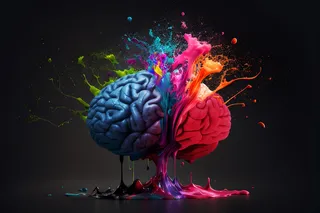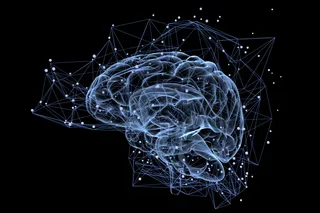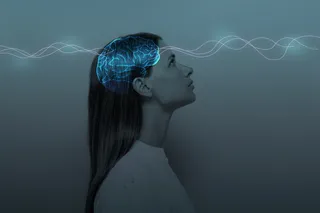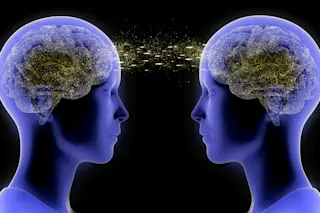Roughly 20 million people suffer from depression in the united states. for about 10 percent of them, nothing in psychiatry’s standard arsenal offers relief, not the extensive repertoire of drugs, not cognitive therapy, not even electroconvulsive treatments (what used to be called shock therapy). Their disease is life-threatening, with a high risk of suicide. Emory University neurologist Helen Mayberg has pioneered a startling way to help people suffering from this devastating form of depression, by literally getting inside their heads. The treatment, known as deep brain stimulation (DBS), involves drilling into a patient’s skull and inserting very thin wires that deliver current to precisely targeted brain regions.
Deep brain stimulation is still experimental; it has been deployed in fewer than a hundred severely depressed patients. But in some cases, it has resulted in an almost instantaneous transformation. Mayberg, professor of psychiatry and neurology and Dorothy C. Fuqua Chair in Psychiatric Neuroimaging and Therapeutics, has seen patients, weighed down for years by hopelessness, emerge into the world just moments after a small electric current is applied to their brain. The success of DBS suggests a new, more biologically precise definition of depression based on brain circuits, physically interconnected neurons that signal each other and form anatomical networks. Think of it this way: The brain is like a circuit board, and mood disorders are glitches in its wiring, or disruptions in how signals travel from one node to another. A disordered brain may need tweaks in order to break out of a loop of despair. Mayberg explored the repercussions of this new view—what she calls Depression 3.0—with discover reporter Sherry Baker.
Antidepressants and cognitive therapy help many people suffering from depression. Why take such a drastic surgical approach?
M: Most people are familiar with forms of depression where people are functional, trying to get through their lives, but needing some help from therapy or drugs or both. I initially had that view of the disease. But then I saw people disabled by treatment-resistant depression. They had no options after multiple medications, psychotherapy, and electroconvulsive therapy had failed. They suffer enormously. They may kill themselves. Severe depression robs these people of their past. They can’t even remember what it was like to be well. The disease hijacks their memory and colors everything. Sure, surgery might seem radical to psychiatrists who want to try yet another mix of drugs, even though nothing has worked before. And I’ve had ethicists ask, “How could you use invasive surgery on the depressed?” But they’ve clearly never met a patient in this tragic situation.
How did the new techniques of brain imaging get you interested in depression?
M: I was in medical school at the University of Southern California in the late 1970s, and although computed tomography scanning (CT, which is a series of X-ray scans that create cross sections of the body) was around, psychiatrists weren’t thinking about where everything was in the brain. Neurologists were. Then in the mid-1980s, I became a neurology resident at Columbia, and that was when functional imaging and brain scanning hit. Suddenly there was a way to see what in the brain makes you depressed. Psychiatrist Robert Robinson at Johns Hopkins University School of Medicine was mapping the brains of people who developed depression following a stroke. I moved to Hopkins and went into radiology to learn about that. What truly spoke to me was the fact that we could now study the link between stroke and depression, using brain imaging. That’s when I zeroed in on depression.
What does the depressed brain look like?
M: Certain neurological diseases such as Parkinson’s and Huntington’s can cause depression. We wanted to map the activity of the brain in depressed patients with these diseases. We did a small study in depressed people with Parkinson’s and got a whopping finding: We saw changes in the frontal lobe (linked to executive function, personality, and emotional control), the cingulate (involved in emotions, learning, and memory), and the temporal lobe (which synthesizes memories). Then we looked at depressed patients with Huntington’s disease and depressed stroke patients, and we saw the same pattern of changes. It didn’t matter what neurological disease we looked at. If the person was depressed, we saw the same brain activity. We were using positron emission tomography (PET), which gives you a real-time view of the brain in action. You tag chemicals with radioactive probes—one labels an analog of glucose, the brain’s main energy source—so you get a picture of brain activity rather than brain structure.
After seeing this pattern in patients with different neurological disorders, the next step was to look at depressed people who didn’t have any other illnesses. In 1991 we recruited patients with serious depression for a small pilot study. And again we saw the same pattern. The patterns suggested an ensemble of brain regions involved in the disease, giving us early clues as to which brain parts might be relevant for new forms of treatment.
Around this time, Prozac and other similar anti-depressants became widely used, but your studies revealed a surprise about how they work.
M: Once we had our map of brain activity in depression, we could ask, what happens when people get well? At the time, in the early 1990s, Prozac was the drug of choice. I moved to the University of Texas to a new imaging lab and set up experiments to look at its effects in the brain. I used the fact that we had treatments that worked to probe what happened to a person’s brain when the drug was working. That would give us a better understanding of what was wrong to start with.
My colleagues pointed out that it was important to compare people taking these drugs with those receiving a sham medication, or placebo. That turned out to be a pivotal study. We had a small group of people who got better with placebo treatment. We mapped the changes in their brains and discovered that there were certain things that happened in the brains of everybody who got well, whether they took the drug or the placebo. If those changes in the brain didn’t take place, no matter what someone took or didn’t take, they didn’t get over their depression. It turned out that getting well with a placebo had a lot in common with getting well with an active drug.
All of these patients had been successfully treated for their depression before; then they relapsed. A part of their brain knew what it was like to be well but not how to get there. In the context of the hospital, where they were told they were getting a pill that would help them, their brains mobilized and changed. The media twisted those findings to suggest that drugs don’t work or that people shouldn’t take pills. I was livid. The actual message is that the brain has systems that can come online on their own, with some guidance. The brain can change if a patient believes that something is helping him. That’s deeply scientifically important.
How did that work lead you to a possible “depression circuit” in the brain?
M: We found that activity dropped in the brain’s subcallosal cingulate region, also known as area 25, whenever people recovered from depression, whether they were on a drug or a placebo. If activity there didn’t decrease, they didn’t get over their depression. It was very curious.
We thought we could learn more with an experiment to track mood in healthy, nondepressed people. We put them in a pet scanner and had them recollect a sad event. We saw a negative correlation between area 25 and the frontal cortex, the thinking part of the brain: The more activity increased in area 25, the more it dropped in the frontal cortex, and the sadder the person was. The opposite was also true: The more activity in area 25 went down, the more activity in the frontal cortex went up, and the better the person’s mood was.
Suddenly, we had evidence that these two regions of the brain related to mood and conscious thought aren’t functioning independently—they’re yoked together, working as a unit. There’s a pathway, a direct connection between them. When this pathway gets stuck in a particular pattern of activity, you become clinically depressed.
How did you get from there to the idea of using electrodes?
M: The finding suggested that changing activity in one part of the pathway could change it in others as well. I started to look at previous research and saw increased activity in area 25 in experiments where people experienced negative moods and emotions. Area 25 “talks” to many other important parts of the brain: the frontal lobe, which is highly affected by cognitive therapy; the brain stem, a major drug target; the hypothalamus, the circadian system; and the nucleus accumbens, the brain’s reward system. I started to think, this is a convergence zone. For depression to get better, you have to do something to area 25.
In the early 1990s, surgeons were successfully treating tremors in patients with Parkinson’s disease by creating lesions in the hyperactive globus pallidus, a brain area crucial for movement. Studies of DBS in Parkinson’s patients demonstrated that electrical stimulation from an implant could have the same effect, and unlike a lesion, DBS is reversible and programmable. It is essentially a pacemaker for the brain that allows us to make adjustments as needed.
I had had this idea for a while that DBS applied to area 25 might help depression when nothing else did. I talked to neurosurgeon Andres Lozano at the University of Toronto about using DBS on area 25, and he was convinced we could get an electrode in safely. This was the first time I realized I had any kind of aggressive streak. To suggest a new type of brain surgery based on imaging findings was considered a bold experiment, but it seemed like a reasonable thing to try, based on the data and the available technology.
Some Parkinson’s patients developed bleeding in the brain following deep brain stimulation. Knowing the risks, how did you choose your first patient?
M: The people we recruited were at least five years into their severe depression. They had tried everything with no success. These were morbidly ill patients who were disabled by depression. I saw all of them myself, psychiatrists screened them, and the surgeons met with them. I explained what we were going to do, and why. One woman, a nurse, said, “I doubt this is going to work, but I’m willing to take a chance.” She was patient number one.
I knew that if the last 20 years of my work was true—if I had correctly identified the network of brain regions that are important in depression—DBS should work. Still, I became extremely nervous. I worried that it would hurt people or make them worse. But Dr. Lozano asked me, if my mother had horrible, untreatable depression, given everything I knew, would I try it on her? And I said, “Absolutely.” Even if it might not work, having a potential new option for someone who has exhausted all of their other ones was a gift.
The very first operation on a depressed patient was dramatic. What happened?
M: I was in the operating room with the patient, and her head was bolted into a frame. She was awake and was having a hole drilled into her skull. You could smell it. I think one of the reasons these patients can tolerate the surgery is that they are so shut down from their depression.
I told the patient that I needed her undivided attention, because I didn’t know if the procedure might change her heart rate or blood pressure. We had the experiment set up so that we could map the brain changes associated with stimulation from the different electrical contacts in the brain, allowing us to see which one reduced activity in area 25. If we saw brain activity changing in the wrong direction, or if the patient’s mood worsened, we would turn down the voltage. And if we got into trouble, we’d turn it off. As we got ready to turn on the electric current, I asked the patient to tell me if she felt anything, even if it was just that her nose itched. I had no idea what was going to happen.
The electrode had four contacts along its length, each of which could be stimulated separately. We were targeting an area with a layer of white matter (the fibers that connect neurons) sandwiched between two layers of gray matter, where neuron cell bodies are. We didn’t know which part would be best for turning down area 25. The first contact was below the white matter. We turned it on and increased the voltage. Did she feel anything? No. Then we moved to the second contact, which was right in the white matter. Four volts, then five. Nothing. We turned it to six, and she suddenly said, “What did you just do?”
Her face changed. She said she felt a lifting that was difficult to describe. “It’s like I’m trying to tell you the difference between a laugh and a smile,” she said. “It’s like the first day of spring, when you go outside and a crocus is coming out of the ground.” Stimulating the brain can evoke memories or hallucinations, and I asked if she might be experiencing that. She said no, she simply felt as if spring were coming and that things were going to be ok.
The next patients had similar outcomes. About 70 percent of them in this small study gave descriptions of lifting or of a void going away. Others started noticing that colors would pop more vividly or that they felt more attentive to people in the room. They used more words and became more observant. Later, they would say that they had experienced a kind of relief.
But just one dose of electrical stimulation cannot cure depression, right?
M: That’s a critical point. There was a clear change over a week as we gave them a bit of stimulation every day in the hospital. But you need to keep the stimulation on long term. The wires in the brain are connected to what is basically a pacemaker that keeps up the stimulation. In these early trials, we would put the battery in, send the patients home, and check on them a week later. If they reported feeling low again, we adjusted the settings to make sure we were stimulating the right area with the right voltage. After a while, we got better at consistently hitting that sweet spot. Here at Emory, we’re refining that process even more. But as long as we stimulate the right location and don’t change the dose, the effect on people’s mood doesn’t go away.
How successful have you been overall?
M: The first patient received DBS in May of 2003 and since then, we’ve treated more than 35, and other companies or researchers have treated about 30 more. Among our patients, the majority, around 60 percent, have remained improved. A very small number have asked to have the implants removed, and two patients committed suicide, including patient number one. The tragedy is that both of them had sustained periods of remission, but their lives were chaotic, and we can’t treat that. I was very concerned over their suicides, but the rate of suicide in people with this form of malignant depression left untreated is very high. Among our patients who have reached clinical remission (defined as a score of less than 8 on a metric called the Hamilton Depression Rating Scale), which would include one-third of the 20 people in the first cohort, none has relapsed without a reason. Their symptoms do return if the battery drains on the pacemaker, though.
One issue is, as we get people well, what is our obligation as a community to help them be productive in the world? It’s hard enough for a healthy person to get a job after a few months of unemployment. Imagine what it’s like for someone who’s been in lockdown for years and has a brain implant. We need to help patients reintegrate. That’s true for any disease, but brain diseases are special, because they rob our ability to interact in the world in a way heart disease or a broken leg doesn’t. We shouldn’t oversell DBS. It’s not ready for prime time. But it does change people’s lives, one at a time. A patient from Toronto found a job. She is seeing that she can do something with her life. There are so many individual stories that show the power of science when it can intervene.
You have some financial stake in deep brain stimulation. Could you explain how that works?
M: As the coinventor of a procedure that is licensed to a company now working to obtain FDA approval, I do have a financial interest. Dr. Lozano and I filed a Canadian patent for DBS in area 25. We licensed it to St. Jude Medical, Inc., which pays a licensing fee to our hospitals at the University of Toronto and other institutions. The company wants to market and sell the electrode device as a treatment for depression. If they’re successful, we would eventually receive royalties. But this requires an FDA-approved trial. St. Jude Medical, Inc., is running a clinical trial to test the safety and efficacy of area 25 DBS over a period of six months. It is a double-blind, placebo-controlled trial, meaning neither the doctors nor the patients will know if the stimulator is on or off. Medtronic, another device company, is setting up a DBS study in another area of the brain, too. Because of these potential financial conflicts of interest, my research is monitored by Emory, and I do not participate in the industry-sponsored clinical trials.
What are the big-picture lessons from your studies?
DBS is telling us something important about the brain and how it regulates mood. This is now a system we can define, corral, and explore. Our DBS work was a critical proof of principle showing that electrical stimulation of a specific brain circuit could have significant effects in patients who were otherwise resistant to treatment. Now I can say that I know a putative circuit that has a causal relationship to disease, and I can turn it on and off—not exactly like a light switch, but with a sustained impact.
That said, we still don’t know exactly what we did. DBS doesn’t just turn down activity in one part of the brain. Area 25 seems to be an intersection connecting a number of different brain regions, and stimulation at that hub has an impact throughout the network. It probably increases activity in some parts of the network and decreases it in others. Understanding how DBS works is a critical next step. Much of our current research is aimed at that.
Additionally, we’re looking at whether DBS might induce long-term changes in the brain so that perhaps we could stop it after a period of sustained recovery. So far, it seems that treatment must be continued. When it stops, symptoms slowly return over several weeks, even after several years of remission.
We are also extending our studies to include bipolar patients, and another line of our research uses imaging to determine if there are patterns of brain activity that can predict which patients are most likely to respond to DBS treatment.
How close are we to a full understanding of depression and other mood disorders?
M: Depression 1.0 was psychotherapy—people arguing about whose fault it was. Depression 2.0 was the idea that it’s a chemical imbalance. This is Depression 3.0. What has captured everyone’s imagination about this, is that by dissecting a complex behavioral disorder into its component systems, you have a new way of thinking about it. It was always thought these disorders were just too complicated. They are too complicated, but the fact that you can intervene lays a foundation to think about other complex disorders. Some will allow that very easily, such as obsessive-compulsive disorder and addiction, because there is good circuit dissection. Schizophrenia and autism will be harder.
DBS might really change only certain elements of depression. Maybe the only thing it does is allow the brain to move on. And this might change the definition of the disorder. The illness might be as if the parking brake is on in my car. I used to know where I wanted to drive, but now, I can’t even move my car. Maybe all DBS does is allow the brake to disengage, and the rest is up to you. It maintains a more normal state of the brain, and then it’s up to the patient to use the brain. But that’s a big demand, if you’ve been disabled for many years.
The fact that people who are this ill get better is wonderful. Amazing. I’m ecstatic. After all, I’m a doctor. But we don’t get everybody well. We have to figure that out. I don’t live under the illusion that I can just turn the brain back on and it goes about its business. That would be like if I replaced your bad hip: Just giving you the new hip doesn’t mean you’re going to win the marathon…or even that you’ll have the stamina to train. That’s your hard work, but I’ve enabled your brain to give it a shot.














